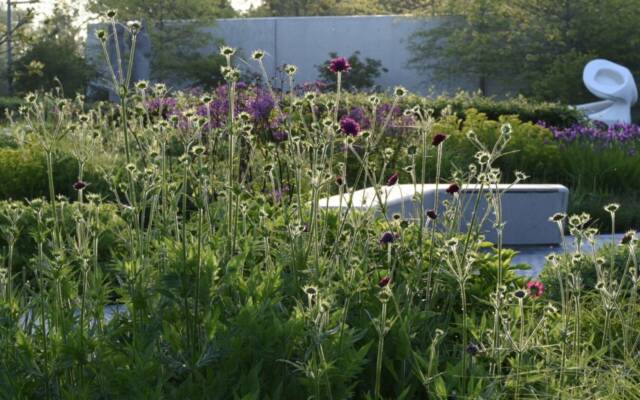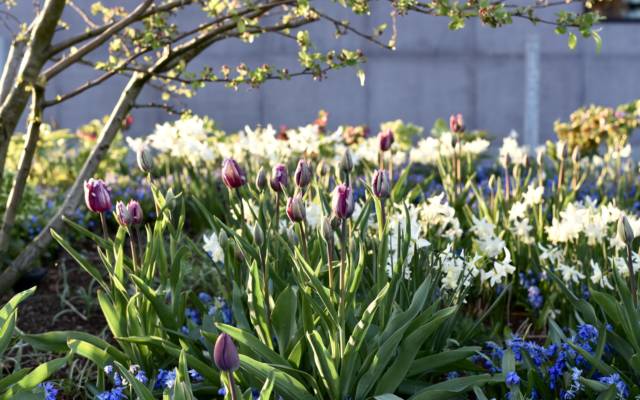
The Hepworth Wakefield Garden
The Hepworth Wakefield Garden is open daily and free to enjoy.
The Hepworth Wakefield Garden
The Hepworth Wakefield Garden, designed by internationally acclaimed landscape architect Tom Stuart-Smith, is free for all to enjoy.
Tom Stuart-Smith’s design draws inspiration from its unusual setting between 19th-century red-brick mills and a 21st-century art gallery, edged by the River Calder. It echos the striking, angular shapes of the David Chipperfield-designed gallery while harnessing a naturalism that reflects Barbara Hepworth’s deep connection to the landscape.
As well as Stuart-Smith’s distinctive planting, there are outdoor sculptures by Sir Michael Craig-Martin, Barbara Hepworth and Kim Lim.
Find out about the story of The Hepworth Wakefield Garden here.

Sustainability in our Garden
Whether you’re joining a workshop, spotting butterflies with the iNaturalist app, or simply taking a moment of calm, you’re helping us grow a greener, more resilient Wakefield by visiting our garden.
Find out more about what we are currently working on.
Read MoreSculpture in the garden

Ascending Form (Gloria), 1958
Barbara Hepworth
Wakefield Permanent Art Collection (The Hepworth Wakefield), Donated by Eric and Jean Cass through the Contemporary Art Society 2010
The two diamond shapes in Ascending Form (Gloria) can be seen as representing natural forms, with the one growing organically out of the other, or as a reference to hands coming together in prayer.
One of her most frequently recurring subjects was the standing form, which she related to the feeling of a human figure in the landscape.

Pitchfork (Yellow), 2013
Sir Michael Craig-Martin
Courtesy of the artist and Gagosian
This 4m yellow pitchfork stands tall amongst the trees in the garden. It is taken from a series of giant and brightly coloured painted steel sculptures that resemble commonplace objects.
Appearing like drawings in the air, Craig-Martin’s deceptively simple sculptures pose questions about the role that objects play in our everyday lives.
Hear Michael Craig-Martin describe his sculpture in this short film.

Day, 1966
Kim Lim (1936–1997)
Acquired with the support of the Contemporary Art Society, 1983
This work, Day, which is made from painted steel, was conceived as an outdoor sculpture. The tall arch not only acts as a sun dial casting shadows to gauge the time of day and year, but its elongated form and curved crest echo the elliptical orbit of the earth around the sun.
The acquisition of Day into Wakefield collection in 1983 was prompted by Lim’s close alignment with the sculptural ethos of Barbara Hepworth, as both artists shared a mutual concern for the relationship between abstraction and the landscape.

Fan Construction, 2023
Halima Cassell
Cassell’s distinctive style integrates bold forms with an infinite variety of deeply carved, complex patterns. Combining strong geometric elements with architectural principles, Cassell’s work incorporates recurrent patterns inspired by the geometry and symmetry found in nature, her surroundings and from her own heritage. Born in Pakistan and raised in Lancashire, Cassells varied, multi-cultural background and interest in Islamic art, design and architecture is tangibly present in her work.
Cassell is known for her work in ceramics, and several of her ceramic sculptures are held in Wakefield’s art collection, including Fan 2005, a relief carved in unglazed clay which relates to the patterns reprised in Fan Construction. For this work, Halima has combined pigments to create a warm red hue, which responds to the red brick of Rutland Mills while providing a counterpoint to the concrete of The Hepworth Wakefield.
Dimensions: Cold Cast Iron, 21 foot (h) x 51cm (d)
Our changing display of sculptures in The Hepworth Wakefield Garden has been generously supported by:
In bloom December
Malus ‘Evereste‘
Rosy, red crab-apples stay on the bare stems of Malus ‘Evereste’ all winter long, providing food for the birds on cold, frosty days. This is an excellent tree for year-round interest, with beautiful blossom in the spring and bright autumn colour too.
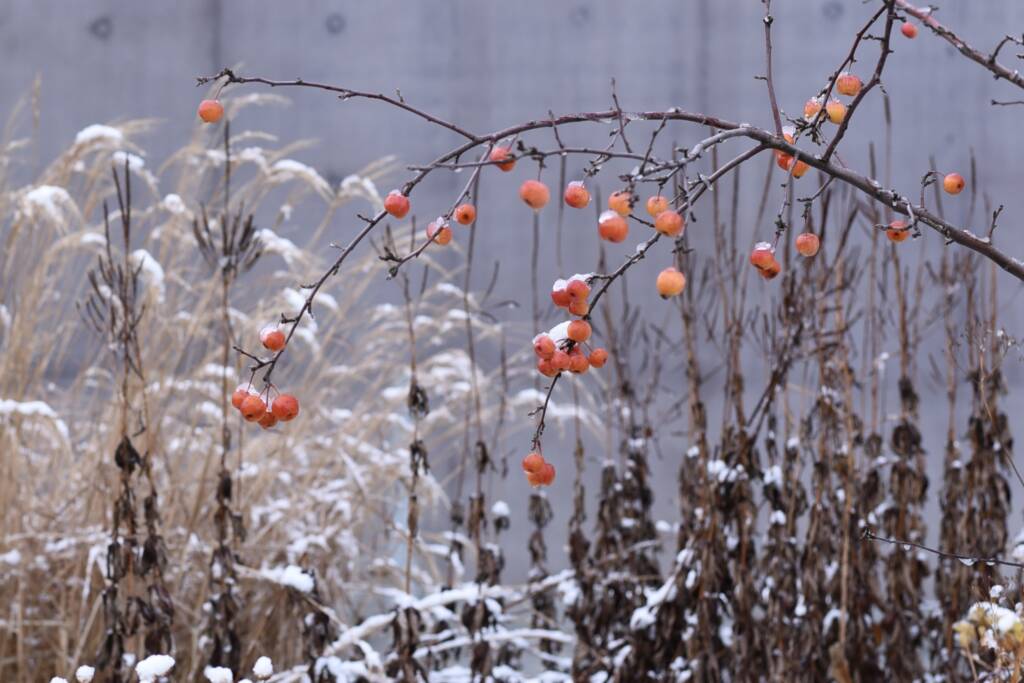
Helleborus argutifolius
The holly-leaved hellebore is a perennial native to Corsica and Sardinia and has evergreen, spiny leaves with a beautiful turquoise tint. Like other hellebores they flower in winter and as the season progresses their nodding pale green blooms will uncurl. Helleborus argutifolius is a resilient plant and beautiful in combination with our Geranium ‘Salome’ and Omphalodes cappadocica.

Fagus sylvatica (beech)
Beech hedges provide a sculptural, repeating motif across the garden. Although they are deciduous, when beech trees are clipped and kept as hedges, the plants hold on to their leaves throughout winter, protecting the stems from the cold. These bronze-coloured leaves rustle in the breeze and provide excellent habitat for birds. As the new green leaves emerge in spring, they push the old ones away.
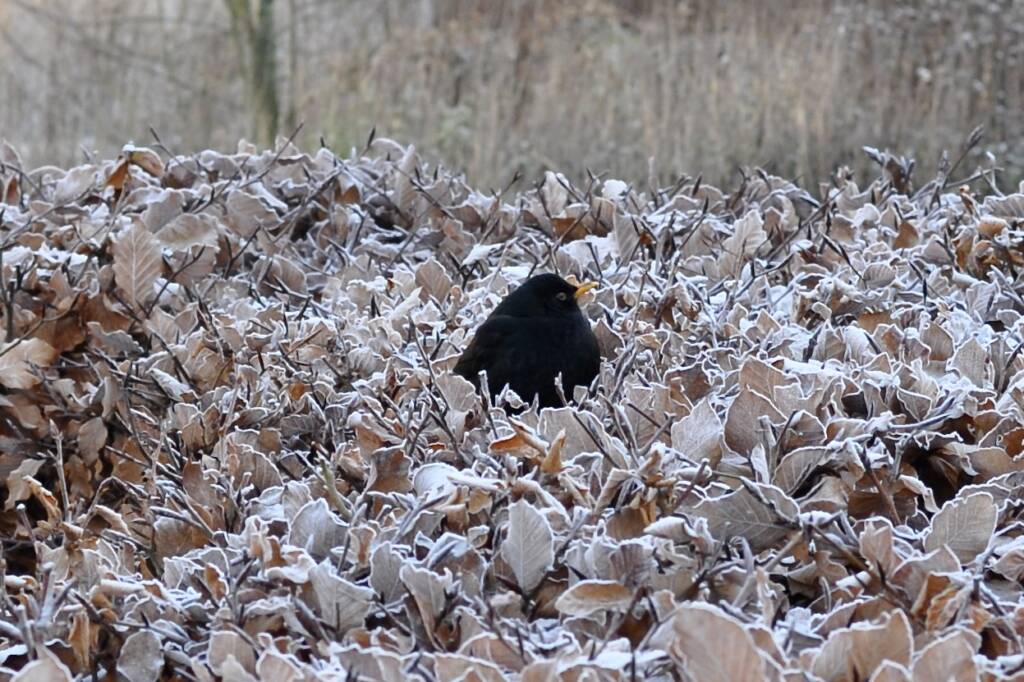
Nandina domestica
This evergreen shrub has delicate white flowers in the summer which turn into bright red berries. The plant is commonly known as heavenly bamboo, and although not truly a bamboo it has a similar upright character and reaches about 1.5m high. The leaves change colour throughout the year, emerging a ruby-purple and shifting away from green again as the temperatures cool.
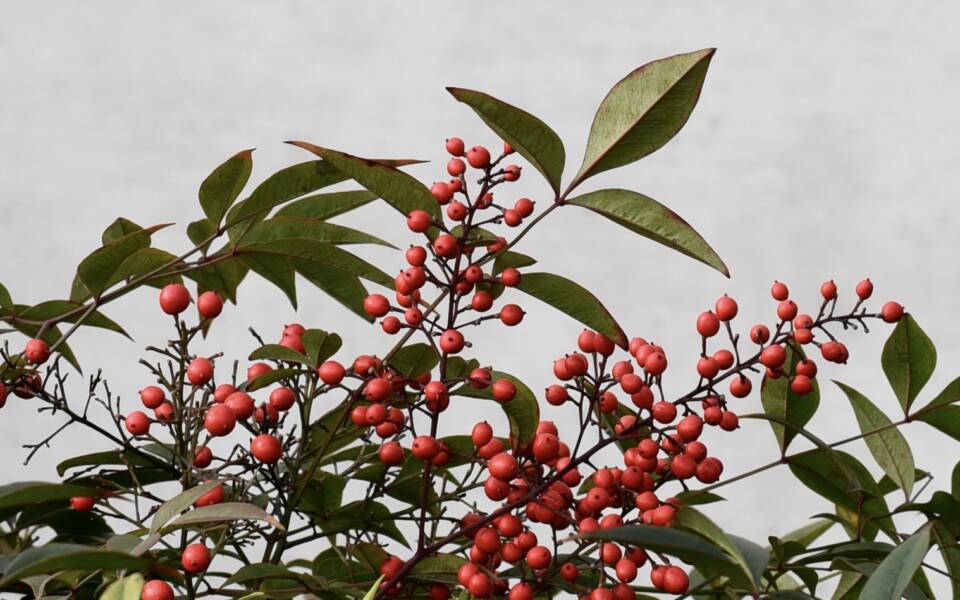
Diary of a Cultural Gardener
Between May 2019 and May 2021, Katy documented her work in a monthly diary to offer a little glimpse into life in The Hepworth Wakefield Garden.
View all of Katy’s diary entries here.
Help Katy care for The Hepworth Wakefield Garden
We have transformed a strip of unused land into a beautiful flower-filled garden, free for all to enjoy. As a living composition, the Garden requires daily care and attention to ensure it remains an urban oasis for everyone.
If you are able, please support this work. Any donation, no matter the size, makes a real difference. Please donate here.



